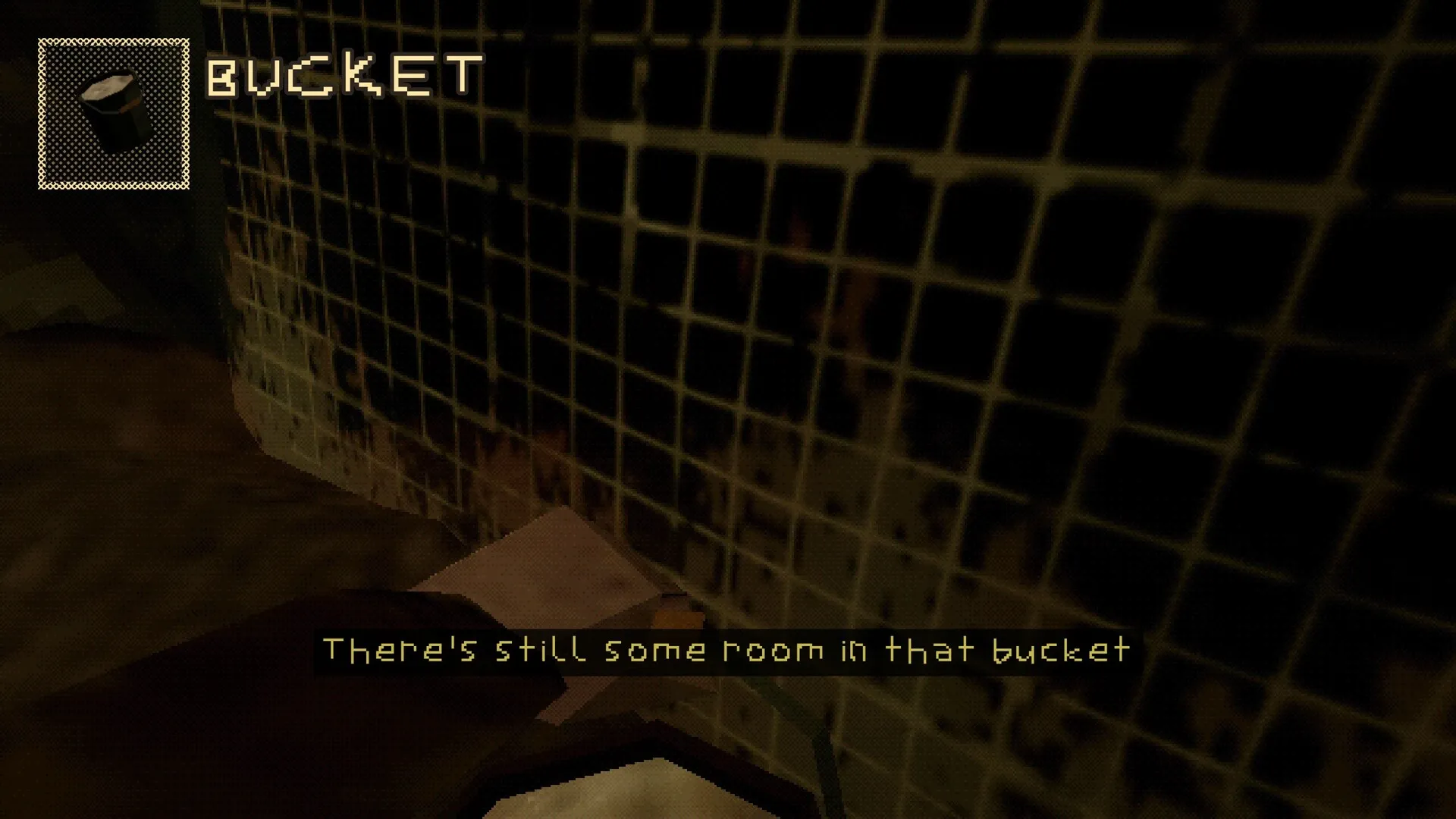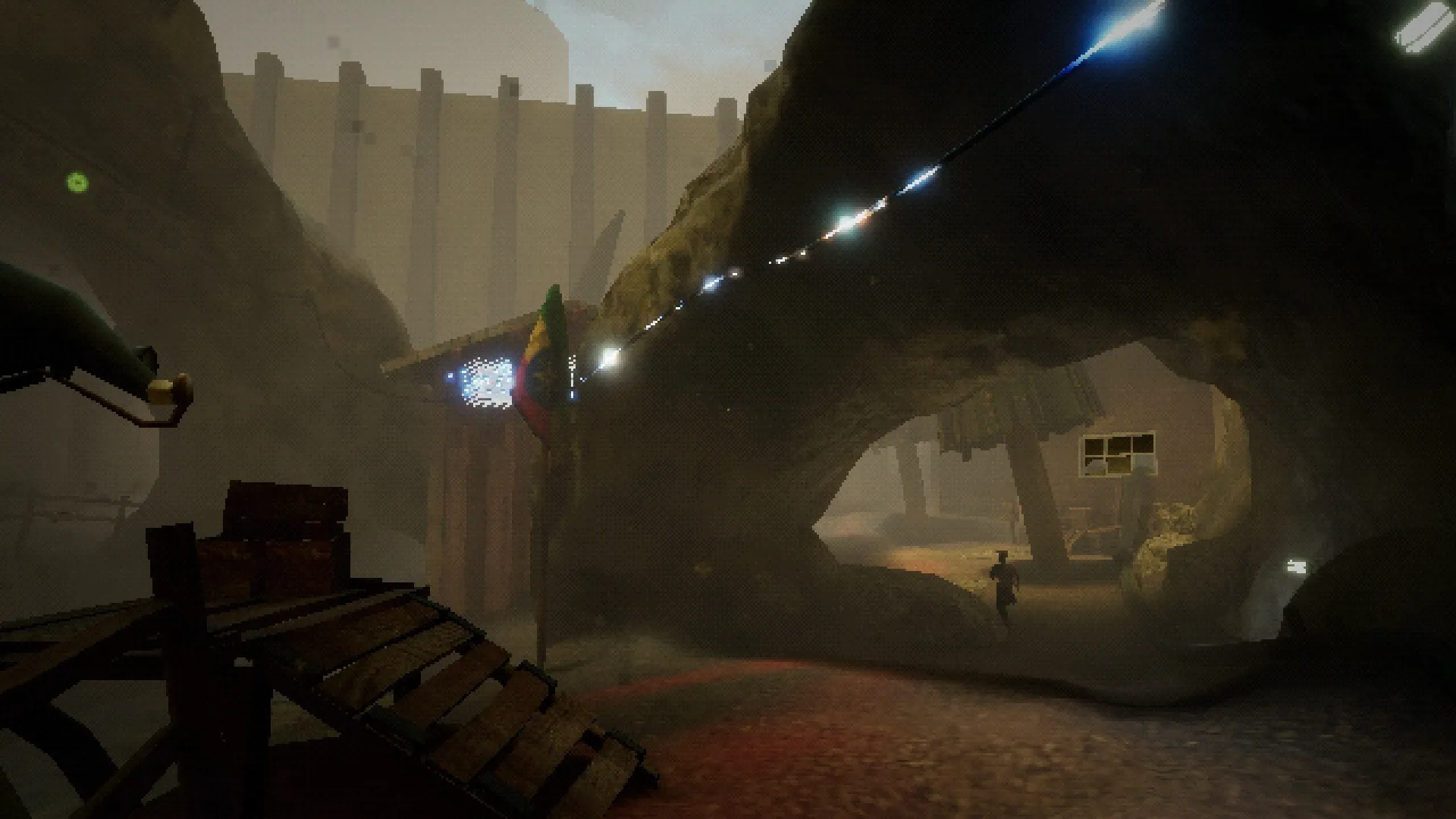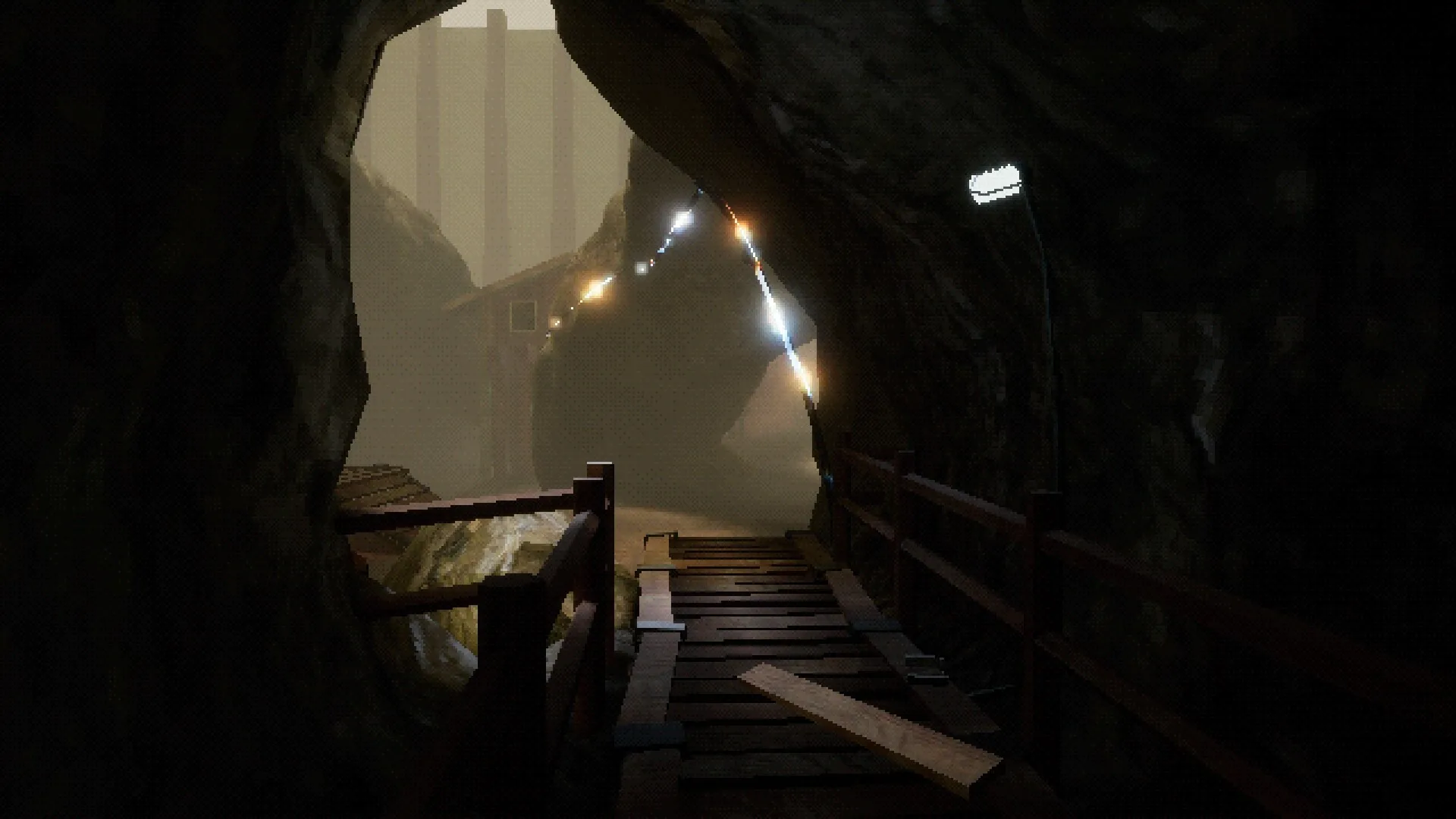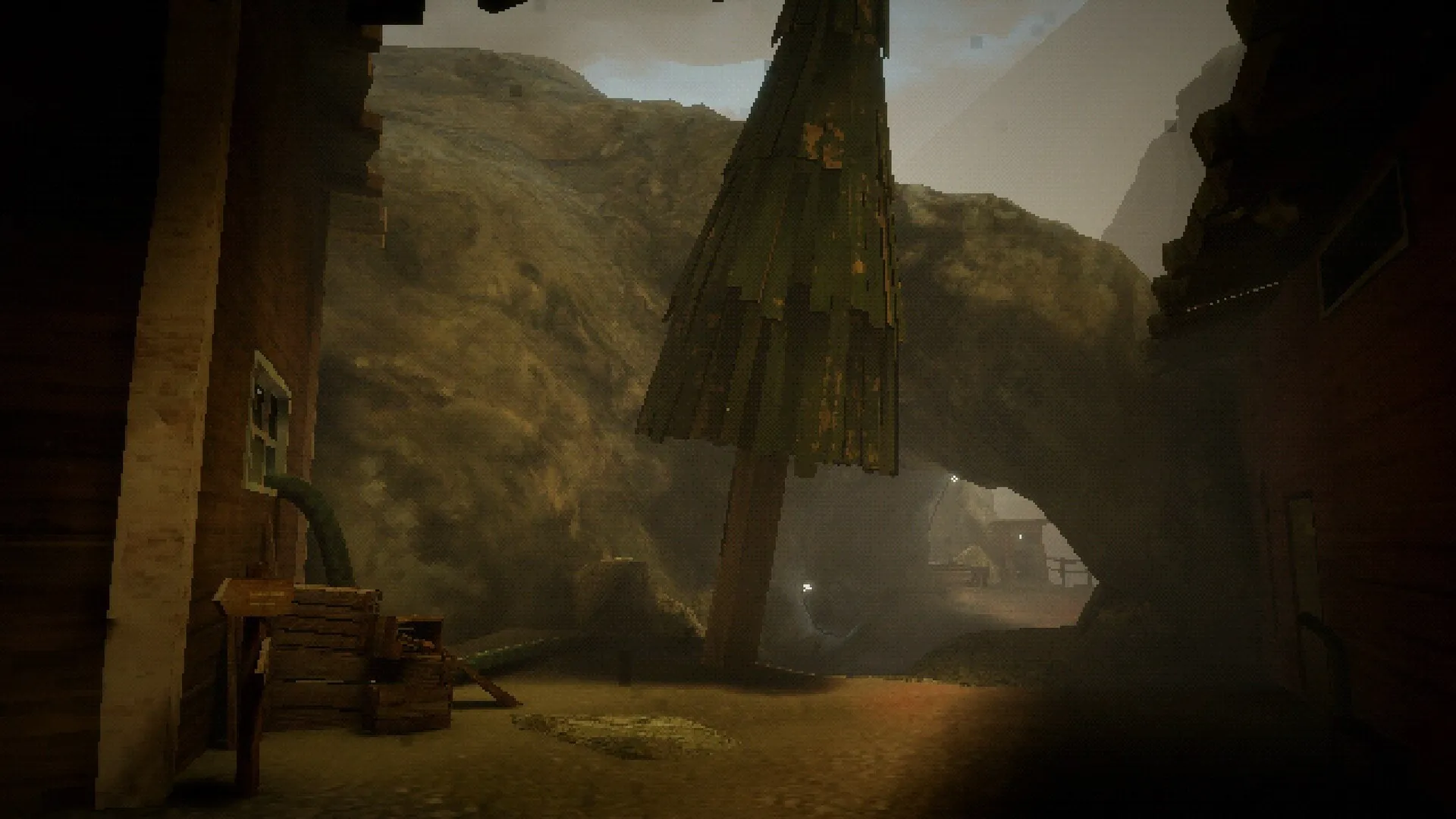Julien Eveillé, a solitary developer, created Threshold, a chillingly unreal experience for players. In this psychological horror game, your primary duty is to ensure a mystery train maintains its speed. The retro-inspired, PS1-era images create an unnerving atmosphere that matches themes of isolation and control.
Threshold’s central theme is reflection on the nature of work and existential problems. Players must navigate a high-stakes environment where survival depends on repetitive tasks like blowing a whistle to keep the train running and collecting oxygen canisters.
From the start, the atmosphere surrounds you. The austere, minimalistic environment sets the tone for an ambiguous narrative. Interactions with Mo, your only coworker, foster a sense of reliance and scepticism. Mo’s notes heighten the sense of isolation, underlining the vulnerability of your situation.
Threshold’s mechanics are inextricably linked to its narrative. Each task is significant, and maintaining speed serves as a metaphor for current work constraints. Managing your oxygen supply necessitates important decisions, making every moment urgent and crucial. In this sense, Threshold becomes a thought-provoking exploration of duty and sacrifice, elevating the everyday.
The Weight of Duty at Threshold
In Threshold, players take on the role of a clerk stationed at a lonely mountain outpost, entrusted with supervising the operations of a mystery train that must maintain speed at all costs. Your responsibilities include blowing a whistle to keep the train running and managing your limited oxygen supply, creating tension between survival and employment demands. This arrangement offers a clear gameplay loop and captures the game’s overall statement on labour and control.
Your only ally in this lonely environment is Mo, a coworker who communicates primarily through hurriedly written notes. This choice heightens the sense of alienation as you navigate the spooky surroundings with little guidance. Mo’s cryptic clues and your tasks add to the intrigue, encouraging players to question their role and the fundamental nature of the system in which they participate.
Threshold’s narrative is rich with existential concepts that resonate strongly with the player’s experiences. The game raises ethical difficulties, such as the ethical consequences of blindly following commands to maintain train speed, echoing real-world concerns about corporate exploitation and individual agency. Each task is weighted with significance; blowing the whistle becomes a ceremonial act that emphasizes the ridiculousness of the situation.
Unanswered questions persist throughout the game: what is the train carrying? Why is the air supply so limited? Who was the prior clerk, and what became to them? On a psychological level, these riddles engage players, pique their interest and encourage them to search the environment for clues. This exploration is more than just an act of curiosity; the minimal narrative and environmental storytelling create a complicated tapestry that enables players to form their conclusions.
Threshold employs its mechanics to deepen its narrative, making every option relevant and every moment filled with emotional weight. The game’s blend of exploration and moral inquiry distinguishes it as a one-of-a-kind entry in the indie genre, inviting players to reflect on the nature of their involvement with the world, both in-game and beyond.
The Mechanisms of Survival in Threshold
Threshold’s primary gameplay loop is deceptively simple but deeply engaging. The main task is to keep a strange train on track by blowing a whistle anytime it slows down. This act not only serves as an important gameplay component but also represents the constant demands of a work environment that stresses efficiency over well-being. Each whistle blast depletes your oxygen supply, connecting the urgency of your actions to the game’s thematic exploration of scarcity and survival.
Collecting tickets in exchange for oxygen canisters adds another layer to the loop, requiring strategic resource management. The tension between action and consequence is palpable; every decision to rush or take a moment to breathe can lead to catastrophic consequences. This dynamic effectively immerses players in a cycle of pressure reflecting greater concerns about labour and corporate expectations, making even the banalest task urgent.
Threshold’s interactions are mostly based on exploration and environmental storytelling. Players can explore the small, cramped outpost, collecting clues about its dark past and the whereabouts of the former clerk. The game promotes curiosity by rewarding players who take the time to look beyond their current tasks. This exploration is more than just a way of gathering information; it becomes an integral element of the narrative experience, with each discovery adding layers to the larger mystery.
Player choices are intertwined into the game’s fabric, and decisions affect how the plot evolves. Engaging with Mo or the environment can lead to diverse outcomes, making the player’s journey more individualized. For example, prioritizing certain tasks over others can change oxygen availability, creating a chain reaction that impacts your survival and understanding of the station’s mysterious circumstances.
In this approach, Threshold excels at blending gameplay mechanics with narrative. The interplay between resource management, exploration, and player agency creates an emotional experience that resonates. Similarly to other indie products that focus on environmental storytelling—such as Papers, Please—Threshold requires players to navigate moral complexities while managing the practicalities of survival, making each moment in the game both a test of ability and a reflection on larger themes.
The Haunting Aesthetics of Threshold
Threshold adopts a graphic style from the PS1 period that is both nostalgic and scary, enhancing its gloomy atmosphere. Thanks to the blocky polygons and subdued colour palette, players are immersed in a world that is both familiar and strange, evoking a sense of degradation and boredom.
This visual decision evokes an outdated style and emphasizes the game’s themes of isolation and existential dread. The jagged edges and low-resolution textures provide a confusing experience, making every area of the outpost feel mysterious.
The visual direction enhances the horror themes by creating an unsettling environment in which the every day becomes sinister. Shadows loom larger, and dramatic lighting contrasts heighten tension, ensuring that even the most mundane tasks, such as collecting tickets or managing oxygen, convey a sense of dread. This visual design successfully manipulates player expectations, employing simplicity to evoke a complex emotional response reminiscent of indie horror titles like Silent Hill, which use limited graphics to intensify psychological dread.
The significance of Threshold’s setting cannot be emphasized. The game’s mountain outpost is a microcosm of captivity and control, with every detail chosen to increase immersion. As players navigate this claustrophobic space, they are continually reminded of their hazardous situation via environmental cues such as the foreboding rumble of the train or the eerie silence that fills the air once tasks are done.
This feedback loop between the player and the environment increases the emotional weight of their actions. Each whistle blew, or oxygen canister consumed reverberates throughout the station, creating a genuine sense of urgency and consequences.
The game’s design promotes exploration, rewarding players who engage with their environment by uncovering deeper levels of the narrative. Threshold is a riveting study of how atmosphere can assist storytelling, bringing players into an eerily immersive experience long after the game ends.
Auditory Depths of Threshold
Threshold’s sombre atmosphere is greatly influenced by its sound design. Ambient noises—such as the distant rumble of the train, the strange echoes within the outpost, and the frightening silence during moments of inactivity—create a soundtrack that heightens the sense of isolation.
Each whistle blown is accompanied by a visceral sound effect that highlights the urgency of the task and serves as a reminder of the player’s depleted oxygen supply. This audio feedback heightens the emotional stakes, making players intensely aware of their dangerous situation.
Interestingly, Threshold does not use voice acting, contributing substantially to the game’s gloomy atmosphere. Mo’s communication is limited to written notes, enhancing a sense of alienation and disconnection. This design strategy heightens the tension since players must interpret the little information offered, creating a sense of dread and ambiguity.
Without characters expressing their emotions, the narrative’s weight relies mainly on the player’s imagination, allowing the game to evoke a more powerful psychological impact. This technique is similar to that of other indie games such as Limbo, where sparse sound design plunges players deeper into a world of dread and mystery, ensuring that every creak and whisper resonates with unnerving significance.
The Recurrent Mysteries of Threshold
Threshold’s numerous endings provide an intriguing framework, inviting players to engage with the narrative on various levels. Your choices, from how you interact with Mo to which tasks you prioritize, have a direct impact on the outcome of your journey.
For example, your resource management and exploration decisions might lead to dramatically diverse plot interpretations, making each game feel unique. This branching narrative design rewards curiosity and encourages players to reflect on their choices, enhancing the emotional weight of the game’s choices.
The game’s design creates a significant incentive for exploration, as discovering hidden mysteries and clues might lead to various narrative pathways and endings. Each game unveils new aspects of the world and its characters, increasing player engagement and understanding of the puzzle.
Threshold encourages players to explore its creepy environment, making every decision feel meaningful, similar to Oxenfree, where exploration leads to richer storytelling. This multifaceted approach to narrative and gameplay ensures that players not only replay the game for alternative endings but also actively participate in a thought-provoking experience that challenges their perceptions and decisions.
Navigating the Hurdles of Threshold
Despite its compelling narrative and engaging mechanics, Threshold is marred by a number of technical flaws that can detract from the overall experience. Players have reported typical issues, including soft locks that block progression and tutorial prompts that reset when the game is restarted.
These flaws can disturb immersion and lead to dissatisfaction, especially given the game’s emphasis on atmosphere and tension. While it is evident that ongoing fixes are intended to address these flaws, the persistence of such bugs can detract from otherwise great stories.
Performance varies greatly between devices, with some users suffering noticeable frame rate reductions, notably during important moments or specific endings. Players have discovered that while the game can run nicely at 45 FPS on platforms such as the Steam Deck, specific moments may drop to 20 FPS, hurting overall pleasure.
This discrepancy can be disconcerting, especially in a game that relies heavily on immersion. Compared to other indie products, such as Hollow Knight, which can maintain a stable performance even during intense moments, Threshold struggles to give a polished experience across all platforms. As a result, while the game’s narrative and design are excellent, technological flaws might impede the player’s journey through the unsettling world.
Reflections on Threshold
Threshold offers players an immersive experience that combines mechanics with a profoundly detailed narrative. Its exploration of existential concepts and moral quandaries is captivating, but technological flaws that sometimes interrupt the atmosphere hampered the game.
Despite these flaws, the rich plot and engaging gameplay loop provide plenty of thought-provoking opportunities for casual and hardcore gamers. Threshold is a wonderful journey for people who enjoy independent games that challenge perceptions and stimulate thought. However, it may require patience due to occasional glitches and performance issues.
The Review
Threshold
Threshold is a thought-provoking indie horror game with a disturbing narrative about duty and existential dread that expertly weaves its mechanics together. While the PS1-era graphics adequately enhance the atmosphere, technical difficulties sometimes disturb immersion. Nonetheless, the rich plot and significant player choices provide an engaging experience that promotes exploration and reflection. Threshold rewards players ready to navigate its flaws with intense emotional connection and intriguing secrets.
PROS
- Engaging narrative that explores existential themes.
- Meaningful player choices with multiple endings.
- Unique PS1-era graphics enhance the eerie atmosphere.
- Intuitive mechanics that tie gameplay to storytelling.
CONS
- Technical issues and bugs can disrupt gameplay.
- Occasional performance drops on certain platforms.
- Limited character interactions may feel isolating.
- Short playtime may leave some players wanting more.





















































